Oscarville Georgia
Introduction
Text-to-speech Audio
In 1910, the town Oscarville had nearly 1,100 African Americans, and many of the families owned their own land or businesses. The community supported numerous churches and included teachers, professionals and businesses. All of that changed in 1912, when the neighboring all-white town in Forsyth County separated by the Chattahoochee River, ran them out, forcing the people of Oscarville to sell their land for cheap or die. The attacks on Black residents escalated following the death of Mae Crow an 18-year white women resident of Forsyth County. She was found raped and murdered on the banks of the Chattahoochee River. With little evidence the police arrested four African Americans, Earnest Knox, Oscar Daniel, Jane Daniel, and Robert Edwards. After Knox allegedly confessed after being tortured, Edwards was lynched by an angry mob before he could make it to trial, Knox and Daniel were both found guilty and hung. Over 5,000 whites gathered to watch the hanging of Knox and Daniel. Decades later the remains of Oscarville was intentionally flooded.
Images
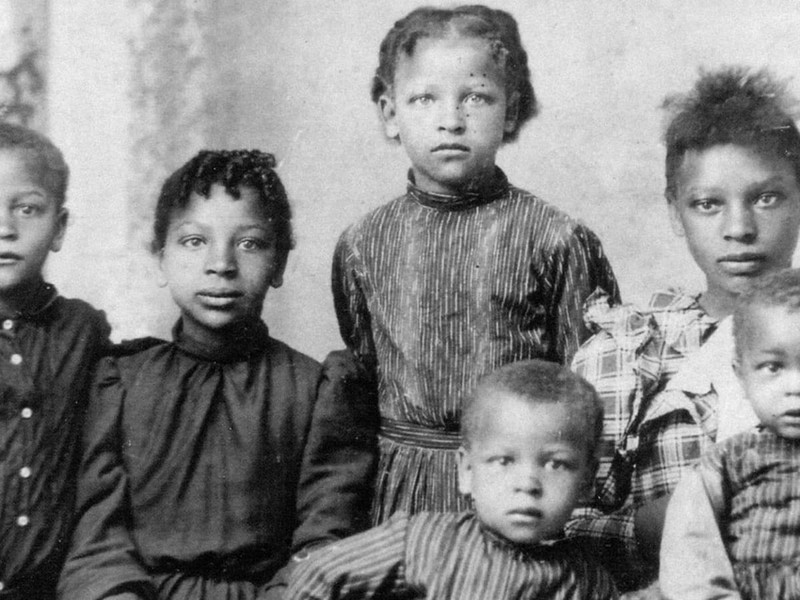
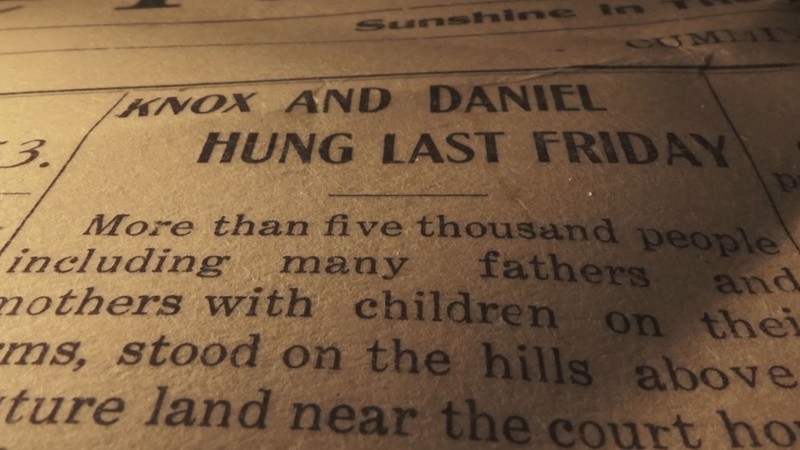
Map of Lake Lanier
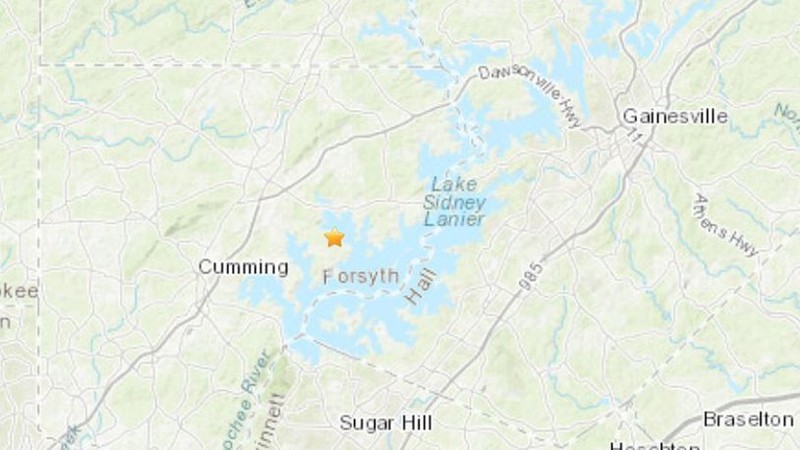
The Hanging of Ernest Knox and Oscar Daniel in 1912
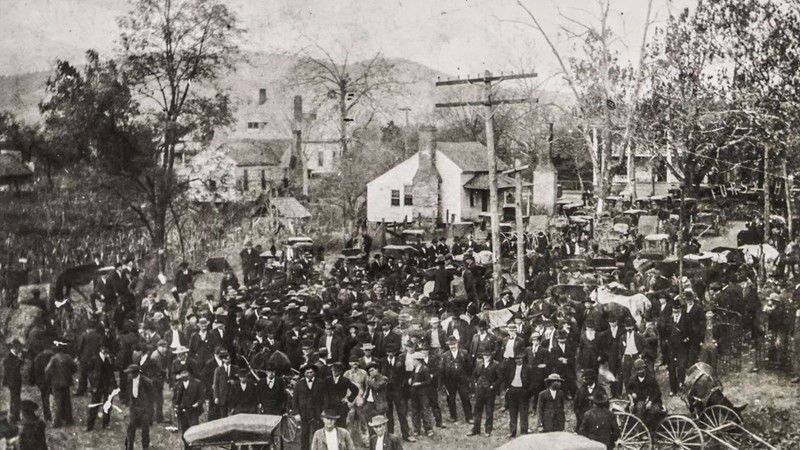
Oprah Winfrey Show visiting Forsyth County in 1987
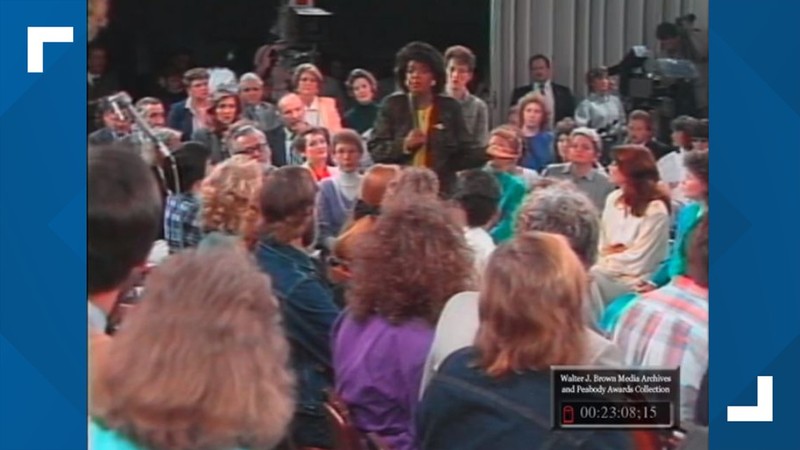
Backstory and Context
Text-to-speech Audio
Forsyth County, Georgia was the site for one the most successful racial cleansing of a Black community in American History. The European-American history of the area starts in the 1800s with the U.S. government forcing the Cherokee Nation which led to the Trail of Tears, then the racial cleansing of a thriving Black town, followed by the government claiming over 50,000 acres of land, displacing over hundreds of landowners and their families. Over 20 cemeteries were moved or submerged by the lake. “In the 1830s, the U.S. government expulsed most of its members from what would be one of the southeastern-most origins of the Trail of Tears.” (Enjeti A, 2021). Fast forward 80 years, the year is now 1912, the land is now the State of Georgia, and an hour north of Atlanta is Forsyth County. In Forsyth County there was a Black community with more than 1,100 African Americans, “most who were freed after fighting in the American Civil War” (Morris B, 2021). They owned land, operated their own business, had their own churches and schools. The town was called Oscarville. Due high racial tensions from the riots in Atlanta 6 years prior many were wary of possible future violence. “It was clear that in the early 1900s, Blacks in Atlanta lived in constant fear of violence. For the small town of Oscarville, that fear would turn into brutal reality.” (Morris, B. 2021).
There was an all-white neighboring town in Forsyth County called Cumming, Georgia the two towns were shared by the Chattahoochee River. On September 5th, 1912, in Forsyth County, Georgia 22-year-old Ellen Grice a white resident said she had awakened to a Black man in her bed and that he attempted to rape her. “Days later, the Forsyth County sheriff, William Reid, arrested five Black men in connection with the case: Isaiah Pirkle, Johnny Bates, Tony Howell, Fate Chester, and Joe Rogers. Tony Howell was actually the one accused of the crime, but the other men claimed he was with them at the time. All five men were put in jail in the Cumming town square.” (Jones J, 2019). Word of this spread to the Black community, on September 7th, 1912. A local pastor by the name of Grant Smith demanded the men be released, soon after Smith was beaten by an angry white mob, the mob wanted smith to be hung or burned alive. The Governor of Georgia, Joseph Mackey Brown sent the National Guard in to prevent riots and transferred the men to multiple jails for safety and they ended up being in a Atlanta jail. Two days later on September 9th, 1912, Mae Crow 18-year-old white women was found on the banks of the Chattahoochee River raped and murdered, four African Americans were arrested with only speculation and no substantial evidence. The first arrest was 16-year-old boy Earnest Knox who was arrested at his home, Knox’s was then “coerced into a confession by a prominent Cumming resident who mock-lynched him with a rope from a nearby well” (Keefe B, Basye L. 2020). Then three more arrests followed, Knox’s cousin 18-year-old Oscar Daniel, 22-year-old Trussie Jane Daniel, and 24-year-old Robert Edwards. Knox was snuck out the back door of the jail and transported to an Atlanta jail to await trial to avoid the lynch mob waiting for him. On September 10th a lynch mob 2000 people formed, they stormed into the jail cell, they dragged Rob Edwards out, they brutally beat and shot him multiple times. Then hung his body on a telephone pole while people took turns shooting him. “Not a single person was held accountable for the lynching, despite thousands of witnesses” (Keefe B, Basye L. 2020). Edwards died without the chance of due process. On January 23rd, 2021, Robert Edwards was commemorated in downtown Cumming, GA. Black families who were forced to flee out of Forsyth County were present for the commemoration. “EJI the national leader in documenting racial injustice and their partnership demonstrates Forsyth County’s commitment to historical accuracy, context and transparency.” (Kerns, S. 2021). “They wanted to increase awareness of the lynching of Rob Edwards and memorialize him as well as the countless Black families who were tortured, terrorized, and some cases killed”. (EJI 2021). Following the lynching and death of Edwards, the racial cleansing begun a “white mob known as night riders” (Enjeti, A. 2021), raided the town of Oscarville burning down their churches, farms, and businesses. “98% of its Black residents would end up either leaving their homes or being murdered for refusal to move.” (Morris, B. 2021). In October, Earnest Knox and Oscar Daniel were both found guilty of the rape and death of Mae Crow, the all-white “jury took little over an hour to convict Knox and Daniel for Crow’s killing, Trussie Daniel’s charges were dismissed” (Enjeti, A 2021), after the prosecutor and judge visited her sell and cut a deal with her, telling her to testify against Daniel and Knox. Public execution is illegal in the state of Georgia, a tarp was put up to shield the hangings a day before the executions were to take place, but someone had burned down the tarp. Over 5,000 people gathered to watch the hanging of 16-year-old Earnest Knox and 18-year-old Oscar Daniel. With little to no evidence many still believe the boys were innocent.
“In the 1920s and ‘30s, there was a forcing-out of Black people and mass transferring of their land by and to white people”. (Yarborough, Z, 2021). The racial cleansing started with Oscarville but didn’t stop there. Parts of the stolen land would be sold to the U.S. government, “and by 1950 a plan to build Lake Lanier was in full effect. Soon the entire town of Oscarville would be underwater, intentionally flooded in conjunction with the Buford Dam to support the growing demand for a water supply to the nearby cities.” (Morris, B. 2021). The rest of Forsyth County was untouched and “remained an all-white county for a few more decades.” (Enjeti, A. 2021). Thousands of acres of farmland destroy, hundreds of families displaced, and over 20 Black cemeteries submerged.
“During Jim-Crow era Forsyth County didn’t have the “whites only and colored only signs because there were no Black people to be segregated.” (Keefe, B. & Basye, L. 2020). “The racial cleansing of Forsyth County happened in 1912 but didn’t make national news until January 1987 when into Cumming, GA.” (Keefe, B. & Basye, L. 2020). “About 15,000 to 20,000 civil rights marchers, many of them Black, marched to the courthouse square of Forsyth County, where no Blacks have lived for 75 years”. (King L, 2017) The Activist were met with violence. Residents were seen throwing rocks and yelling racial slurs at the civil rights activist. The march was led by civil rights leaders Corretta Scott King and Hosea Williams. Hosea Williams stated "We've come back to Forsyth County today to prove that truth crushed to earth shall rise again…Please understand, Forsyth County. Before we'll be your slaves, we'd rather be buried in our graves and go home to our God and be free". (King L, 2017). The protest also gained the attention of the Oprah Winfrey show, which had only been airing for 6 months. Oprah invited only the residents of Forsyth to the show too discuss its history as well as the protest that were going on. The Protest started to surround the building where the show was being held, Hosea Williams was arrested outside of the building. Inside the building Orpah was the only person of color in the building as she interviewed residents on their views of why Forsyth should or shouldn’t remain all white. “As many residents defended their decision to stay all-white, some casually using the N-word to Oprah’s face. There were dissenters who said the time had come to have Blacks and whites living together in the county, but the majority of the comments shocked Oprah and her production crew so much that they literally got out of town before sundown.” (Keefe B, 2020). Today Forsyth County, Georgia is wealthiest county in Georgia and but according to the census the “Black community only makes up 4.4% of their population”. Whatever is left of Oscarville is at the bottom of Sydney Lake Lanier.
Cite This Entry
Joshua Parker and Clio Admin. "Oscarville Georgia ." Clio: Your Guide to History. July 18, 2023. Accessed January 28, 2025. https://theclio.com/entry/141864
Sources
Work Cited
“Eji Partners with Community to Memorialize Lynching Victims in Forsyth County,
Georgia.” Equal Justice Initiative, 28 Sept. 2021, https://eji.org/news/eji-partners-with-
community-to-memorialize-lynching-victims-in-forsyth-county-georgia/.
Geraldino, Duarte. “Column: In Search of the Spot Where Two Black Teens Were Killed.” PBS,
Public Broadcasting Service, 16 Jan. 2017, https://www.pbs.org/newshour/nation/column-
search-spot-two-Black-teens-killed.
Keefe, Author: Brendan. “Whitewashed: The Racial Cleansing of Forsyth County.” 11Alive.Com,
24 Aug. 2020, https://www.11alive.com/article/news/investigations/the-reveal/forsyth-
county-lynching-memorial-to-go-up/85-e9e16326-36d5-4c3b-abfd-e76f9b0a793a.
“Local Organization Holds Dedication for Historical Marker Documenting 1912 Lynching in
Downtown Cumming.” Fcn, https://www.forsythnews.com/life/local-history/local-
organization-holds-dedication-historical-marker-documenting-1912-lynching-downtown-
cumming/.
Morris, Bilal. “The Haunting of Lake Lanier and the Black City Buried Underneath.” NewsOne,
NewsOne, 18 Oct. 2021, https://newsone.com/4185919/lake-lanier-Black-city-oscarville/.
n. “The Haunting of Lake Lanier.” Oxford American | The Haunting of Lake Lanier,
https://www.oxfordamerican.org/magazine/issue-113-summer-2021/the-haunting-of-lake-
lanier.
“The 'Racial Cleansing' That Drove 1,100 Black Residents out of Forsyth County, GA..” NPR,
NPR, 15 Sept. 2016, https://www.npr.org/2016/09/15/494063372/the-racial-cleansing-that-
drove-1-100-Black-residents-out-of-forsyth-county-ga.
https://www.npr.org/2016/09/15/494063372/the-racial-cleansing-that-drove-1-100-
Black-residents-out-of-forsyth-county-ga
28, Zoe Yarborough October, et al. “The Most Controversial & Haunted Lake in America: Ga's Lake Lanier.” StyleBlueprint, 3 Nov. 2021, https://styleblueprint.com/everyday/the-most-controversial-haunted-lake-in-america-gas-lake-lanier/.
“Forsyth County, Georgia: The Racial Conflict of 1912.” Black Then, 6 Feb. 2019, https://Blackthen.com/forsyth-county-georgia-the-racial-conflict-of-1912/.
“Looking Back: Civil Rights Protestors Take Back Forsyth County (January 25, 1987).” Tampa Bay Times, https://www.tampabay.com/news/nation/looking-back-protestors-take-back-forsyth-county-january-25-1987/2323535/.
U.S. Census Bureau Quickfacts: Forsyth County, Georgia. https://www.census.gov/quickfacts/forsythcountygeorgia.


